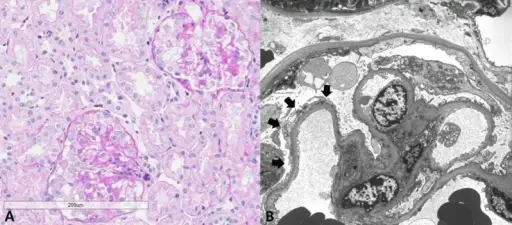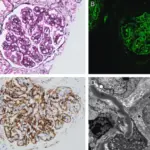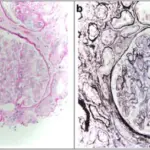Focal segmental glomerulosclerosis is a glomerular disease in adults characterized by sclerosis of some, but not all, glomeruli and only a portion of the capillary tuft is involved.
What is the Pathology of Focal Segmental Glomerulosclerosis?
The pathology of focal segmental glomerulosclerosis is:
-Etiology: The cause of focal segmental glomerulosclerosis is idiopathic, drugs, toxins, infections, and intrarenal hemodynamic alterations.
-Genes involved: Unknown.
-Pathogenesis: The sequence of events that lead to focal segmental glomerulosclerosis is not clear.
-Morphology: The morphology associated with focal segmental glomerulosclerosis shows solidification of the glomerular tuft.
-Histology: The histology associated with focal segmental glomerulosclerosis shows accumulation of acellular matrix and hyaline deposits.
How does Focal Segmental Glomerulosclerosis Present?
Patients with focal segmental glomerulosclerosis are typically more common in males present at the age range of 18-45 years. The symptoms, features, and clinical findings associated with focal segmental glomerulosclerosis include leg edema, ascites, pleural effusion, abdominal pain, ulcerations, and hypertension.
How is Focal Segmental Glomerulosclerosis Diagnosed?
Focal segmental glomerulosclerosis is diagnosed through the clinical presentation, laboratory studies such as urinalysis, serum creatinine concentration, albumin levels, lipid studies. Imaging studies such as kidney ultrasonography.
How is Focal Segmental Glomerulosclerosis Treated?
Focal segmental glomerulosclerosis is treated by nonspecific measures, symptomatic treatment. Immunosuppressants, loop diuretics, angiotensin-converting enzyme inhibitors, potassium-sparing diuretics.
What is the Prognosis of Focal Segmental Glomerulosclerosis?
The prognosis of focal segmental glomerulosclerosis is fair.



